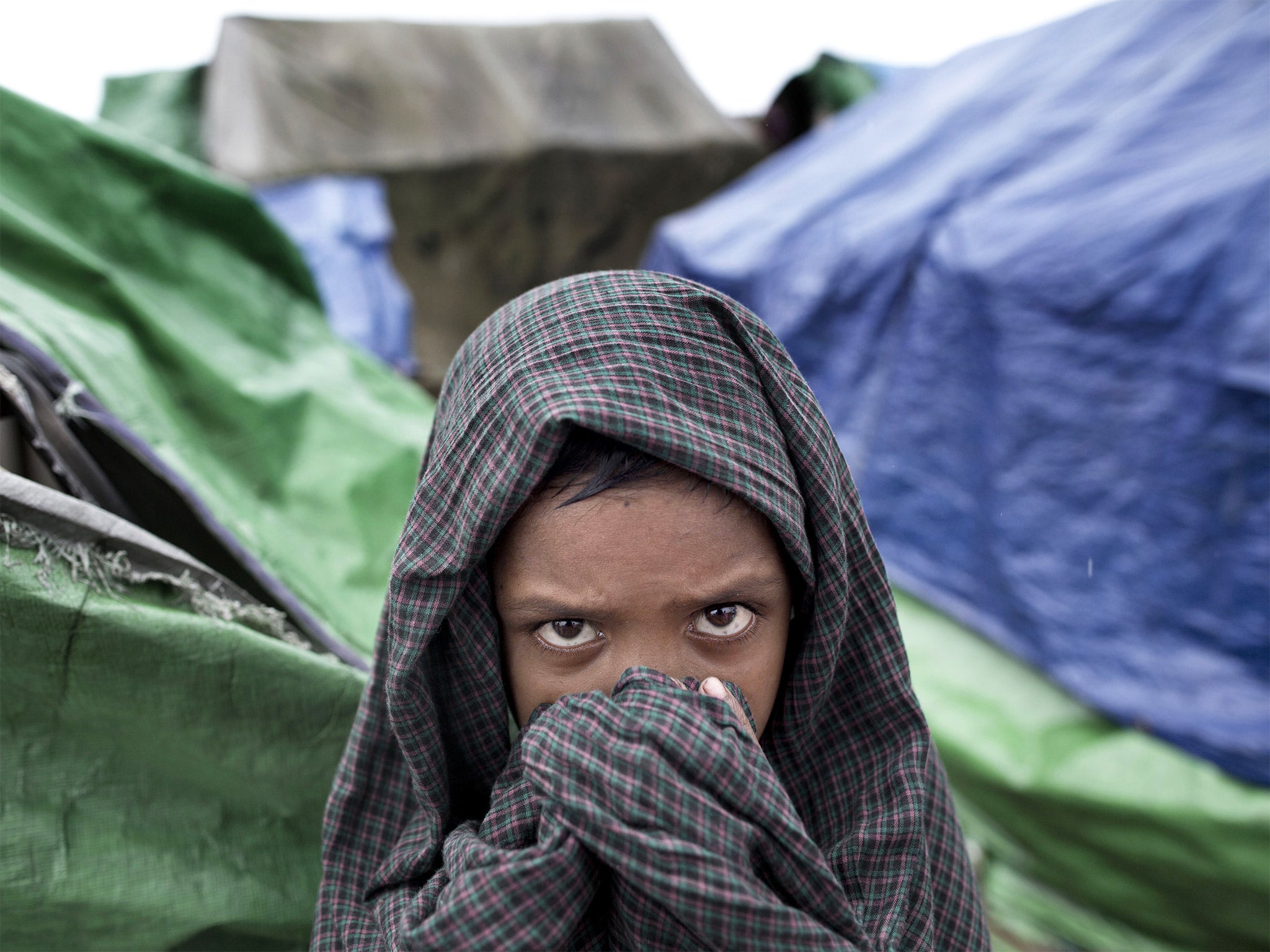Rohingya refugee crisis: Burma’s Muslim minority face choice of life in open-air camps or dangers of fleeing by boat
Thousands could be preparing to go to sea as the monsoon season ends, despite warnings by aid groups of the 'serious risk of another humanitarian disaster'

Boats carrying desperate Rohingya refugees have begun leaving the coast of Burma, sparking fears of a new Southeast Asian migrant crisis.
Thousands more could be preparing to go to sea as the monsoon season ends, despite warnings by aid groups of the “serious risk of another humanitarian disaster”.
Muralam, 36, who lives in a squalid camp for internally displaced persons near Sittwe, the capital of Rakhine State, told The Independent he plans to get on a boat soon and will aim for Thailand or Malaysia if he can.
“It is very dangerous to leave, but I prefer it to living here in the camp,” he said. “I just want to live in the world peacefully, in any country where I can get freedom.”
He is one of 140,000 Rohingya people, widely considered to be among the most persecuted groups in the world, who have been living in the temporary camps for three years, since violence flared between their Muslim community and the Buddhist Rakhinese in 2012.
The hot, dusty camps are hopeless places: many people live with their families, sometimes up to 10 people, in shacks less than 9ft sq.
They depend on food rations, cannot work, struggle to get medicine and are not allowed to leave. Armed guards, fences and barbed wire make sure of that. “This is like living in an open-air prison,” said Muralam, who did not want to give his whole name. Even the hundreds of thousands of Rohingya who do not live in camps face grim conditions across Burma. Stripped of citizenship rights, they are effectively stateless and face oppression and restrictions on their movement.
Muralam said smugglers were not yet openly approaching people, but he believes they will soon and he would take the risk to try to improve the lives of his wife and four children, following a friend who made the same journey earlier this year.
“I spoke to my friend about the trip, how dangerous it is and how difficult, in the custody of human traffickers,” he said. “I know everything about what it is like, and even then, I will still do it.” However, he said his family would not initially accompany him because of the danger.
Muralam will not be the first to leave since the monsoon season began to wane. At least two boats carrying several hundred people, both Rohingya and Bangladeshis fleeing destitution, are believed to have left from Maungdaw South in Burma and Chittagong in nearby Bangladesh in the past few weeks. There are rumours a third boat is preparing to set sail, said Chris Lewa, director of human rights group the Arakan Project.
However, she said the route across the Bay of Bengal and Andaman Sea has become even more risky, because neighbouring countries have adopted “closed-door” policies after the boat crisis in May when thousands went to sea. Amnesty International said those policies may not stop another rush of people who feel they have no option.
“Traffickers and smugglers will undoubtedly resume their trade and grave human rights abuses will again be perpetrated on the seas of South-east Asia,” said its recent report, Deadly Journeys: The Refugee and Trafficking Crisis in South East Asia. “There is a serious risk of another humanitarian disaster unfolding at sea in late 2015,” the report adds, warning also that many more than the 370 people may have died on similar routes earlier this year – the original UNHCR estimate.
Many in the camp are holding out one last hope: that a win for Aung San Suu Kyi in Burma’s first openly-contested election for decades on Sunday could change their lives by ending the camps system. Jamil, 30, who lives in Dar Paing IDP camp, said most people would make their decision after the election. “If the situation stays like this, they will keep torturing us. If it changes, maybe not.”
But even if Aung San Suu Kyi’s National League for Democracy does triumph, the closure of the camps is by no means a certainty. The Lady, as she is affectionately known, has not pledged to shut them and continuing anti-Muslim sentiment in Rakhine and across the country could complicate the situation further.
In an IDP camp near Sittwe, Mabia remembers the day her oldest son left to try to get a boat to Malaysia. She has heard nothing since he left two years ago, and believes he died. She is horrified people are talking about leaving on the boats once again.
She said: “If anyone I knew was getting on a boat I would say to them don’t do it. It’s too dangerous.”
Join our commenting forum
Join thought-provoking conversations, follow other Independent readers and see their replies
Comments